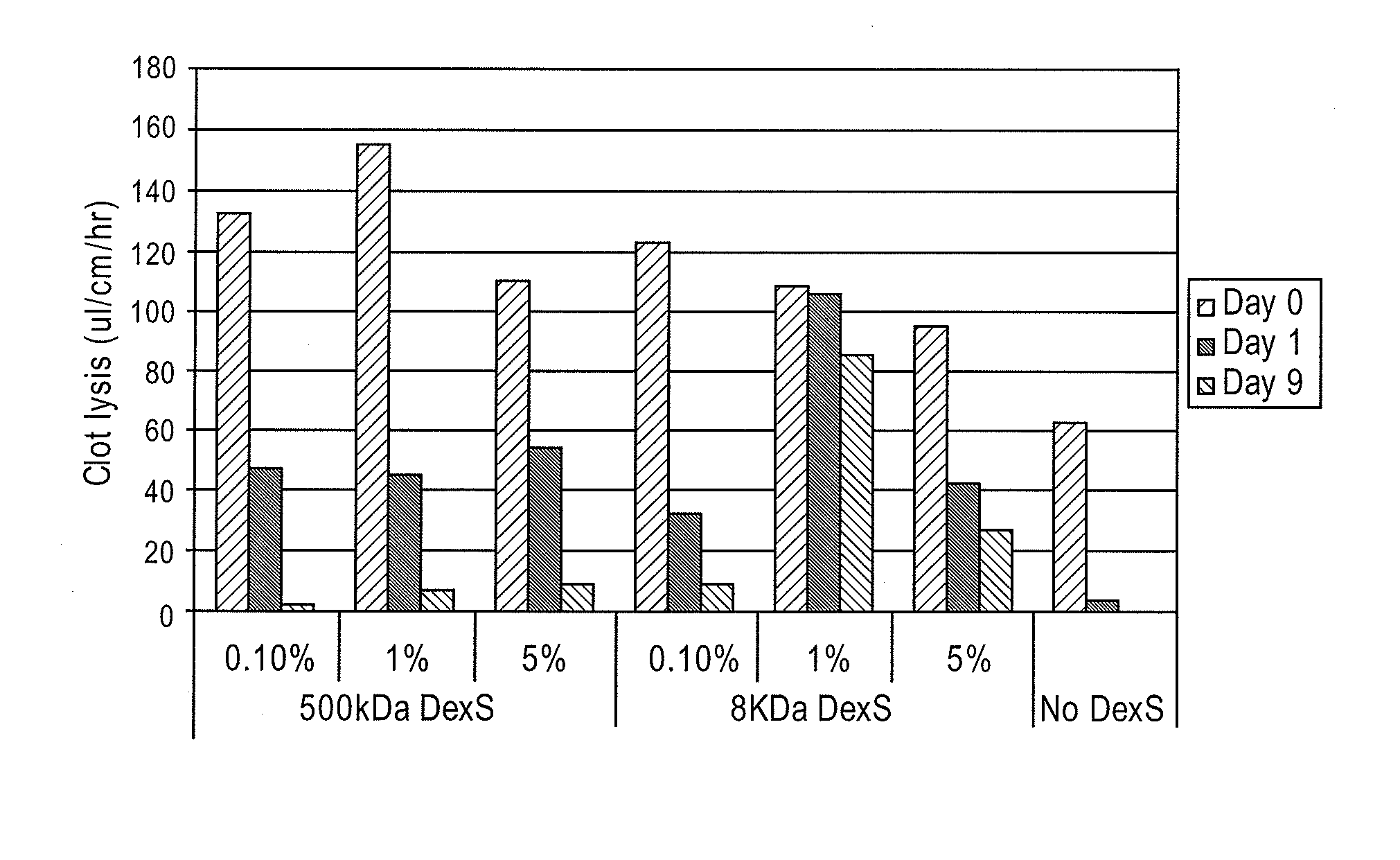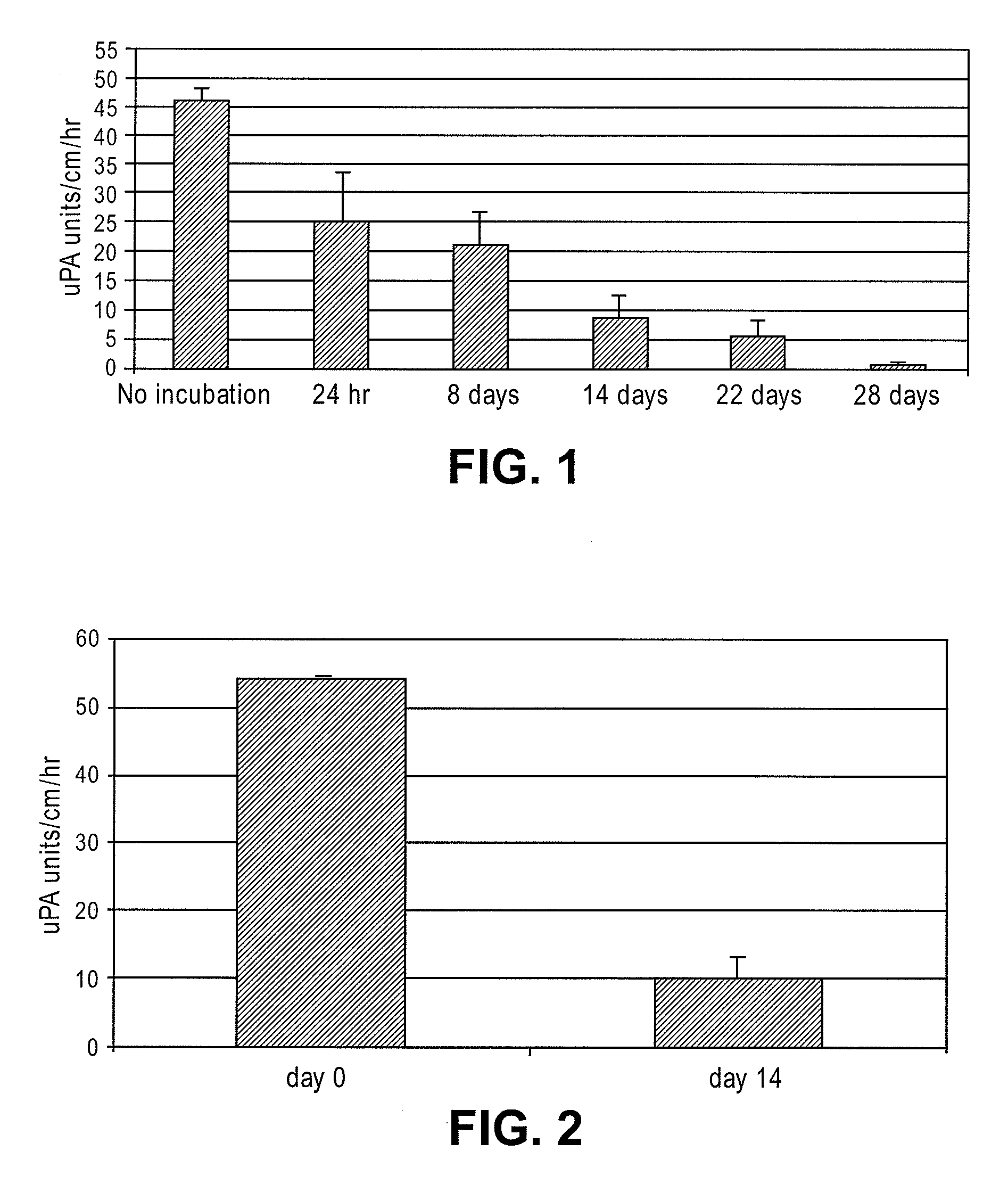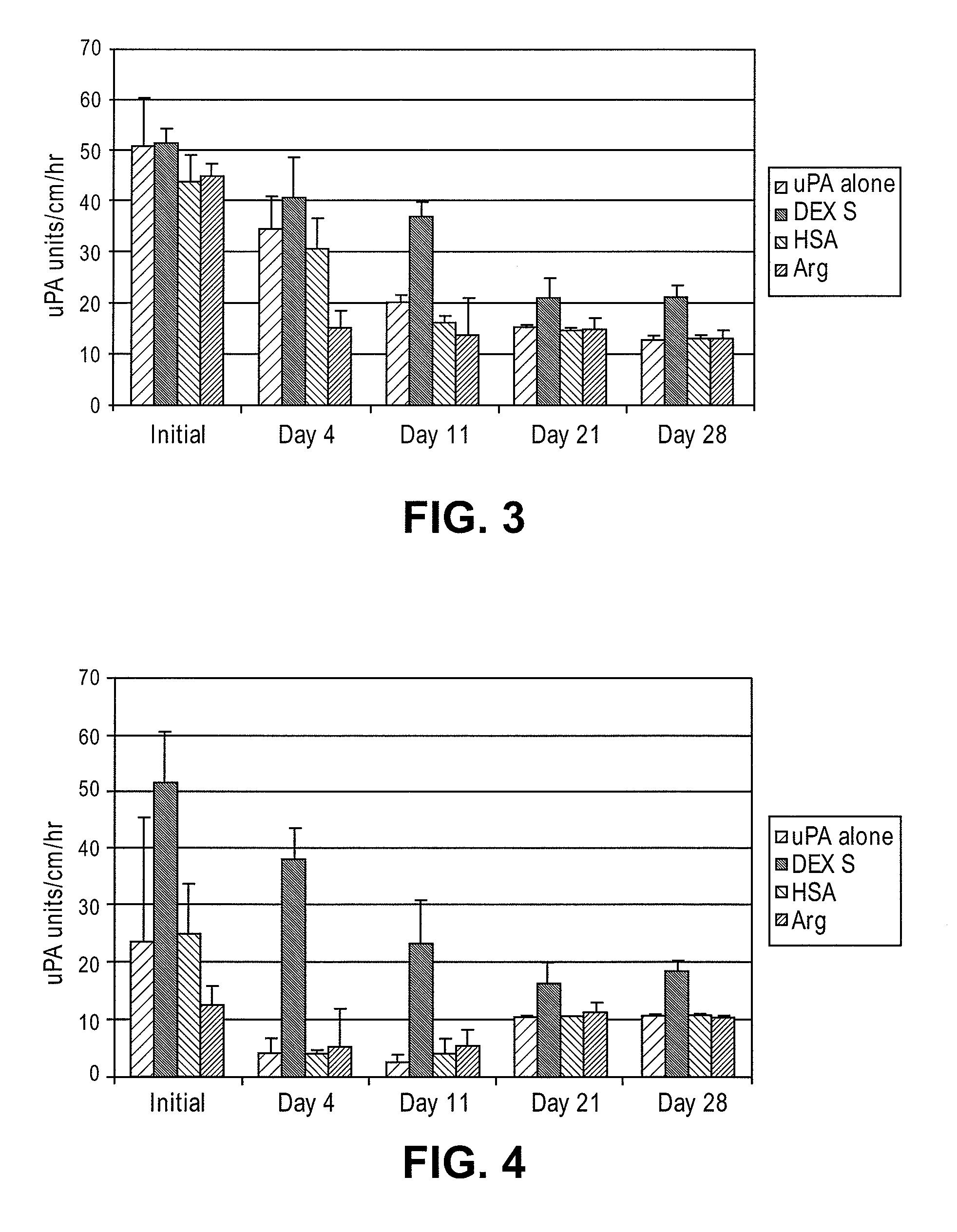Stabilized enzyme compositions
a technology of enzymes and compositions, applied in the field of enzyme compositions, can solve the problems of insufficient time for long-term or chronic devices, insufficient use of agents in implantable medical devices, etc., and achieve the effects of reducing microbial growth, and reducing the formation of blood clots
- Summary
- Abstract
- Description
- Claims
- Application Information
AI Technical Summary
Benefits of technology
Problems solved by technology
Method used
Image
Examples
experiment 1
[0025] Determining a Duration of Fibrinolytic Activity for Urokinase-Type Plasminogen Activator (uPA) Immobilized on Polyurethane Catheter Segments
[0026]To immobilize the urokinase-type plasminogen activator (uPA), polyurethane catheter segments were treated with 1% Butadiene Maleic Anhydride (BMA1:1 ratio) polymer (25% solution in acetone, Polysciences, Warrington Pa.) and 1% Polyethylene glycol 400 (PEG 400, Hampton Research, Aliso Viejo Calif.) in acetone followed by curing at 90-100° C. for 3 hours under vacuum. Subsequently, the cured segments were incubated for 18 hours in sodium acetate buffer containing uPA at 30 units / μl. Thereafter, the segments were rinsed with phosphate buffered saline twice and finally with deionized water.
[0027]To test the durability of the fibrinolytic treatment, the catheters segments were incubated at 37° C. in citrated human plasma for different time periods. The citrated human plasma was replaced with fresh sample after every 7 days. As shown in F...
experiment 2
[0028] Determining in vivo Performance of the Fibrinolytic Catheters Implanted in the Superior vena cava of Rabbits
[0029]To assess in vivo performance of the fibrinolytic catheters, single lumen size 6 French (Fr) catheters were implanted in the superior vena cava of rabbits for 14 days. Urokinase activity was measured on the surface of explanted catheters via a chromogenic assay as is well known to those skilled in the art. As shown in FIG. 2, the catheters retained about 20% of the original activity at day 14. The in vivo results correspond well with the amount of activity lost in vitro after fourteen days of incubation in human plasma (FIG. 1).
experiment 3
[0030] Evaluating Compounds for Improved Performance of the Fibrinolytic Catheters
[0031]Various compounds were evaluated for improved duration of fibrinolytic activity. These compounds included: 1) low molecular weight dextran sulfate (LMW-DexS) with molecular weight of 8 kilo dalton (8 kDa); 2) human serum albumin (HSA); and 3) arginine. In this test, either 1 milligram / milliliter (mg / mL) of HSA or 1% weight / volume (w / v) of LMW-DexS (8 kDa) was added to a solution of sodium acetate buffer containing uPA at 30 units / μl. Either of the above solution was used to incubate BMA / PEG treated catheter segments. In addition, segments treated with BMA / PEG and uPA were rinsed in saline and, subsequently dipped in an aqueous solution containing 0.01% arginine as described in U.S. Pat. No. 4,764,466, entitled Method for stabilizing an immobilized fibrinolytic enzyme, issued on Aug. 16, 1988, the disclosure of which is hereby incorporated in its entirety.
[0032]As shown in FIG. 3, LMW-DexS (8 kDa)...
PUM
| Property | Measurement | Unit |
|---|---|---|
| molecular weight | aaaaa | aaaaa |
| molecular weight | aaaaa | aaaaa |
| molecular weight | aaaaa | aaaaa |
Abstract
Description
Claims
Application Information
 Login to View More
Login to View More - R&D
- Intellectual Property
- Life Sciences
- Materials
- Tech Scout
- Unparalleled Data Quality
- Higher Quality Content
- 60% Fewer Hallucinations
Browse by: Latest US Patents, China's latest patents, Technical Efficacy Thesaurus, Application Domain, Technology Topic, Popular Technical Reports.
© 2025 PatSnap. All rights reserved.Legal|Privacy policy|Modern Slavery Act Transparency Statement|Sitemap|About US| Contact US: help@patsnap.com



